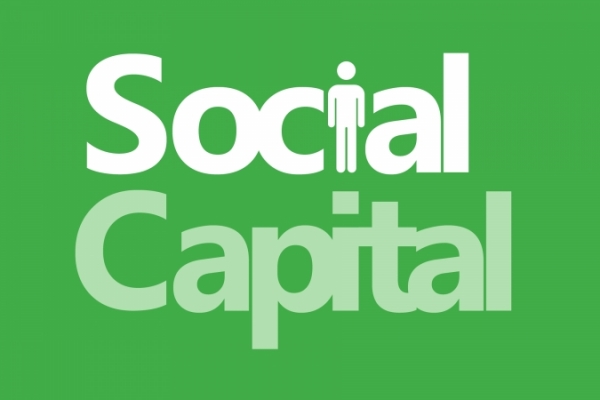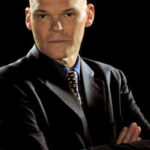Social Capital: What it Means, Why it Matters, and How Science is about to Change the HR World
Don’t you just love the following (apropos) PowerPoint slide? Chances are, if you’ve attended more than a single HR, Talent Acquisition, or Organizational Development conference, you’ve seen it at least a good 50 times:
“Human Capital is the collective knowledge, skills, and experience of all individual employees within the organization.”
If you’re in HR, or you interface with HR on a consistent basis, you’re well aware that these buzzwords are tossed around on a daily  basis. Who needs ‘Paradigm Shift’, ‘Strategic Imperative’, or ‘Web 2.0’, when you have the one-and-only . . . ‘Human Capital’, right? J
basis. Who needs ‘Paradigm Shift’, ‘Strategic Imperative’, or ‘Web 2.0’, when you have the one-and-only . . . ‘Human Capital’, right? J
So when we talk about Social Capital, I understand why Dilbert is justifiably raising an eyebrow from the back of the room. However, even he admits we’re onto something when we suggest that Human Capital is all about what’s ‘within’ employees, while Social Capital is all about what’s ‘between’ employees. Looking at our organization through a Social Capital lens means we must look beyond the black-and-white and see what doesn’t meet the eye, such as how information flows, the paths in which knowledge is shared, (sometimes hidden) communities of practice, informal networks, emergent connections, etc. Social Capital means looking beyond talent and exploring the very ‘connectedness’ of that talent.
For an example, consider the notion of informal networks for a moment. A July 2007 Fortune Magazine article, “The Hidden Workplace” perhaps captures the essence of these hidden power structures best:
“Anyone who has ever worked knows that the org chart, no matter how meticulously rendered, doesn’t come close to describing the facts of office life. All those lines and boxes don’t tell you, for example, that smokers tend to have the best information, since they bond with people from every level and department when they head outside for a puff. The org chart doesn’t tell you that people go to Janice, a long-time middle manager, rather than their bosses to get projects through. It doesn’t tell you that the Canadian and Japanese sales forces don’t interact because the two points of contact can’t stand each other. In every company there is a parallel power structure that can be j ust as important as the one everyone spends stressful days trying to master.”
While you digest the above, take a moment and ask yourself why organizations spend so much time focused on ‘maintaining the formal structure [command-and-control] Org Chart’ when they so rarely reflect how the day-to-day work gets done? Why is there such little focus on self-forming (in many cases) social networks when it is apparent “how much information and knowledge flows through them and how little through official hierarchical and matrix structures”?
In fact, feel free to take this one step further and ask yourself why there is so much focus on improving ‘within-employee’ factors (skills, competencies, etc.) when research is showing us that competitive advantage is more driven through the ‘patterns of connections’ (often called ‘networks’ or ‘between-employee factors’) than the mean level of organizational talent alone. According to Valdis Krebs, one of the foremost thinkers in the way of Social Network Analysis on the planet, “Teams are not made of talent alone. It is how the talents of individual players intersect and interact that distinguishes a good team from a collection of good players.” The Network Thinker
The true value of the crème-de-la-crème HR Pro today, whether you’re in Recruiting or O/D, etc., is the ability to instinctively and consciously see these informal networks and embrace them. It’s about the ability to justify what the nebulous notion of “fit” means to a room full of Executives who may only recognize the lines and boxes of the Org Chart. It’s about the skill of making the invisible visible through the tools of Organizational Network Analysis (ONA) . . . maintaining the connections that drive value within these informal networks, while shifting or removing those connections that are not. Ultimately, it’s about “organizing chaos” just enough to consistently (and incrementally) improve the collaborations, connections, and relationships that drive value creation.
So get excited! This is truly a unique time to be in HR, and more importantly, an unprecedented opportunity to begin sprinkling a little science into what has notoriously been seen as a reactive-metrics driven, bureaucratic, liability reduction-focused, support unit wielding little to no organizational power. The science of Social Capital, informal networks, and ‘connectedness’ is about to put HR solidly on the map of performance-driving superstars. Are you ready for the ride? If so, strap in – it’s about to get real fun in a big-time hurry.
About the author:
Joshua Letourneau is the owner of LG and Associates, a Strategic Sourcing, Executive Search, and Human Capital Intelligence firm based in Atlanta. Prior to founding LG & Associates, Josh worked as a Sales & Marketing professional in the software biz and was a hard-charging Sergeant in the Marines. In his spare time, Josh contributes to Fast Company.com meditates on the value of psychology in the talent game…
See Joshua’s Rants and Riffs on Fistful of Talent by clicking here…
By Noel Cocca
CEO/Founder RecruitingDaily and avid skier, coach and avid father of two trying to keep up with my altruistic wife. Producing at the sweet spot talent acquisition to create great content for the living breathing human beings in recruiting and hiring. I try to ease the biggest to smallest problems from start-ups to enterprise. Founder of RecruitingDaily and our merry band of rabble-rousers.
Recruit Smarter
Weekly news and industry insights delivered straight to your inbox.






